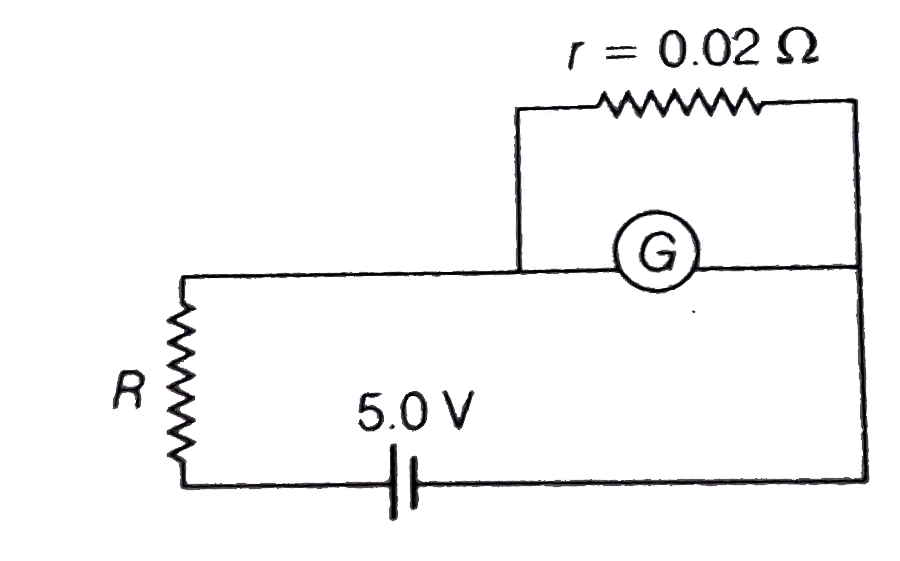In the circuit shown the resistance R is kept in a chamber whose temperature. is 20∘C which remains constant. The initial temperature and resistance of R is 50∘C and 15Ωrespectively. The rate of change of resistance R with temperature is 12Ω/∘C and the rate of decrease of temperature of R is In(3/100) times the temperature difference from the surrounding (Assume the resistance R loses heat only in accordance with Newton's law of cooling) If K is closed at t = 0, then find the
(a) value of. R for which power dissipation in it is maximum.
(b) temperature of R when power dissipation is maximum
(c) time after which the power dissipation will be maximum

(a) 50Ω
(b) 30∘C
(c) 100sec
Similar Questions
The ratio of the resistances of a conductor at a temperature of 15∘C to its resistance at a temperature of 37.5∘C is 4:5. The temperature coefficient of resistance of the conductor is
View SolutionA : Rate constant increases with temperature.
R : Rate of exothermic reaction increases with temperature.
View SolutionA metallic wire has a resistance of 3.0Ω at 0∘C and 4.8Ω at 150∘C. Find the temperature coefficient of resistance of its material.
View SolutionIf the resistance of a conductor is 5Ω at 50∘C and 7Ω at 100∘C then the mean temperature coefficient of resistance of the material is
View SolutionResistance of tungsten wire at 150∘C is 133Ω. Its resistance temperature coefficient is 0.0045/∘C. The resistance of this wire at 500∘C will be
View SolutionThe temperature coefficient of resistance of a wire is 0.00125 per ∘C. At 300 K, its resistance is 1Ω. The resistance of the wire will be 2Ω at
View SolutionThe temperature coefficient of resistance of a wire is 0.00145∘C−1. At 100∘C its resistance is 2Ω. At what temperature the resistance of the wire be 3Ω?
View SolutionIn the circuit, shown the galvanometer G of resistance 60Ω is shifted by a resistance r=0.02Ω. The current through R is nearly 1A. The value of resistance R (in ohm) is nearly.

View SolutionA heating element has a resistance of 100 Ω at room temperature. When it is connected to a supply of 220 V, a steady current of 2A passes in it and temperature is 500∘C more than room temperature. What is the temperature coefficient of resistance of the heating element ?
View SolutionIn the circuit shown in the figure, the value of maximum rate of heat production in resistance R is

View Solution
